Discover 11 hidden attractions, cool sights, and unusual things to do in Częstochowa (Poland). Don't miss out on these must-see attractions: Jasna Góra Monastery, Częstochowa Cathedral, and Kiedrzyn. Also, be sure to include Orthodox Church of the Icon of Our Lady of Częstochowa in your itinerary.
Below, you can find the list of the most amazing places you should visit in Częstochowa (Silesian).
Table of Contents
Jasna Góra Monastery
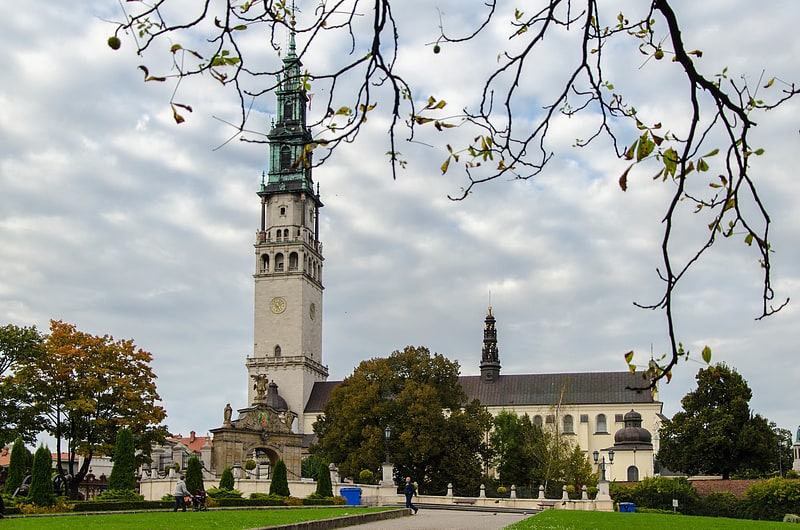
Also known as: Jasna Góra
Shrine to Virgin Mary and pilgrimage site. The Jasna Góra Monastery in Częstochowa, Poland, is a shrine dedicated to the Virgin Mary and one of the country's places of pilgrimage. The image of the Black Madonna of Częstochowa, also known as Our Lady of Częstochowa, to which miraculous powers are attributed, is one of Jasna Góra's most precious treasures.
The site is one of Poland's official national Historic Monuments (Pomnik historii) and is tracked by the National Heritage Board of Poland.[1]
Address: ul. o. A. Kordeckiego 2, 42-225 Częstochowa
Częstochowa Cathedral
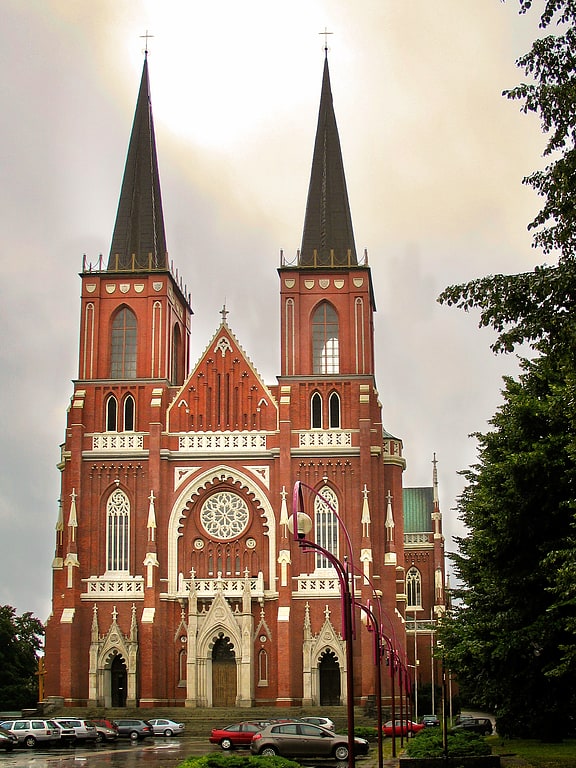
Also known as: Bazylika archikatedralna Świętej Rodziny w Częstochowie
The Cathedral Basilica of the Holy Family also called Częstochowa Cathedral is a religious building that is affiliated with the Catholic Church and was built in the neo-Gothic style, it is a three-nave church following the Roman or Latin rite and is located on the street Krakowska in the city of Częstochowa in Poland.
It is one of the largest of its kind in Europe, built on an old cemetery in the years 1825-1898. It was built between 1901 and 1927 and designed by Konstanty Wojciechowski. The temple in 1925 became the cathedral of the diocese of Częstochowa, and since 1992 is the metropolitan church of the ecclesiastical province of Czestochowa. The facade of the basilica is north; opposite the John Paul II Square (formerly Cathedral Square). In the Chapel of Our Lady of Czestochowa there is a crypt of the local bishops.[2]
Address: Krakowska 15, 42-200 Częstochowa
Kiedrzyn

Kiedrzyn is a dzielnica of Częstochowa, Silesian Voivodeship, southern Poland. It is located in the north-west part of the city, between roads to Łask and Działoszyn. Kiedrzyn has an area of 7.77 km2 and on April 30, 2014 had 2,940 inhabitants.
Kiedrzyn is called "the district of florists" - majority of the houses have their own greenhouses.
In district is located local sport club Orzeł Kiedrzyn and since 1922 Volunteer Fire Brigade. In Kiedrzyn are 2 churches: Church of St. Brother Albert Chmielowski and Church of St. Andrew Bobola.
Kiedrzyn is connected to the city by public transport. The bus line number 13 runs through the district.[3]
Orthodox Church of the Icon of Our Lady of Częstochowa
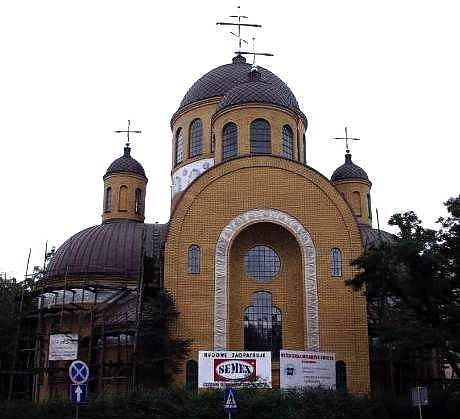
Also known as: Cerkiew Częstochowskiej Ikony Matki Bożej w Częstochowie
Orthodox church in Częstochowa, Poland. The Orthodox Church of the Icon of Our Lady of Częstochowa is an Eastern Orthodox church in Poland honoring the Icon of Our Lady of Częstochowa, considered to be one of the country's national symbols. Construction of the building commenced in 1994 according to a design by Michał Bałasz of Białystok. As of 2009, the church is mostly complete. The bells and windows had been installed, and the facade completed. However, work on the internal decoration of the building still remains largely unfinished. The cornerstone was blessed by the Ecumenical Patriarch Bartholomew I.[4]
Address: Mikołaja Kopernika 23, 42-217 Częstochowa
Muzeum Górnictwa Rud Żelaza

Museum of Iron Ore Mining in Częstochowa - a museum in Częstochowa, located in Stanisław Staszic Park, first opened on December 4, 1989, in underground corridors built in 1974-1976. Former mine workings were recreated here, equipped with mining equipment from the closed Szczekaczka iron ore mine.
The museum is one of the exhibition facilities of the Częstochowa Museum. It is also one of the attractions of the Industrial Monuments Route of the Silesian Voivodeship.
Katedra Matki Bożej Królowej Apostołów
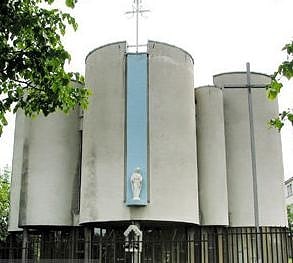
Cathedral of Our Lady Queen of Apostles in Częstochowa - cathedral of the Krakow-Czestochowa Diocese of the Polish Catholic Church in Poland, located at 6 Jasnogórska Street.
Address: Jasnogórska 6, 42-218 Częstochowa
Jewish Cemetery
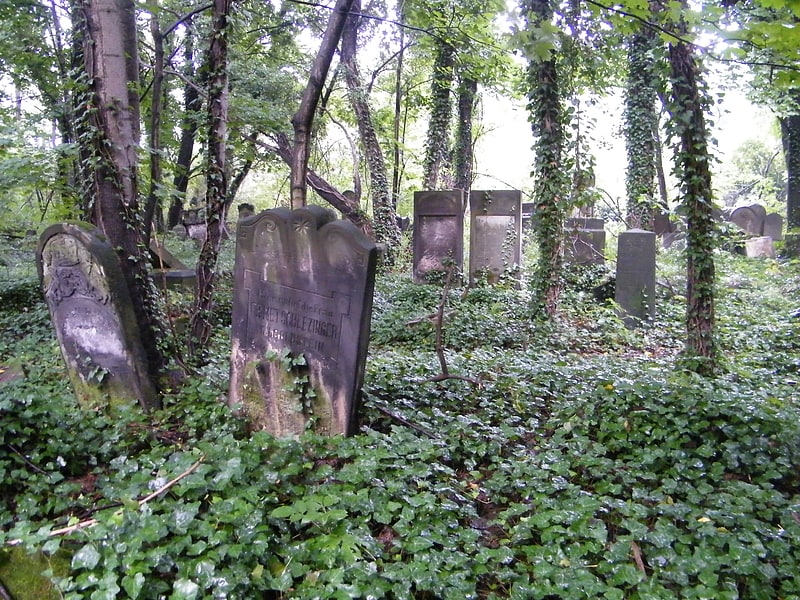
Jewish cemetery in Częstochowa - located on Zlota Street in Dąbie district, next to the Częstochowa Steelworks area.
It is one of the biggest cemeteries in Poland. It occupies 8,5 ha and now it is almost completely covered with forest. There are about 4-5 thousand matzevot, both with Polish and Hebrew inscriptions, mostly covered with ivy. Some of them were moved, broken or overturned. Pollution from a nearby steel mill has also contributed to the destruction over the years.
Address: 245 Złota, Częstochowa
Kościół pw. Świętego Jakuba
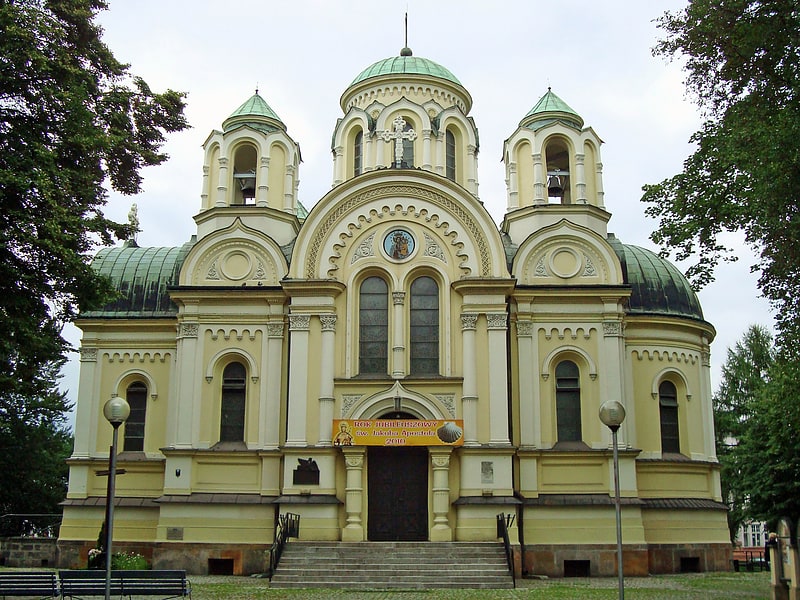
St. James Church in Częstochowa - a church in Częstochowa's downtown area. It is located at Wladyslaw Bieganski Square.
Address: Kilińskiego 8, 42-200 Częstochowa
Cmentarz Kule
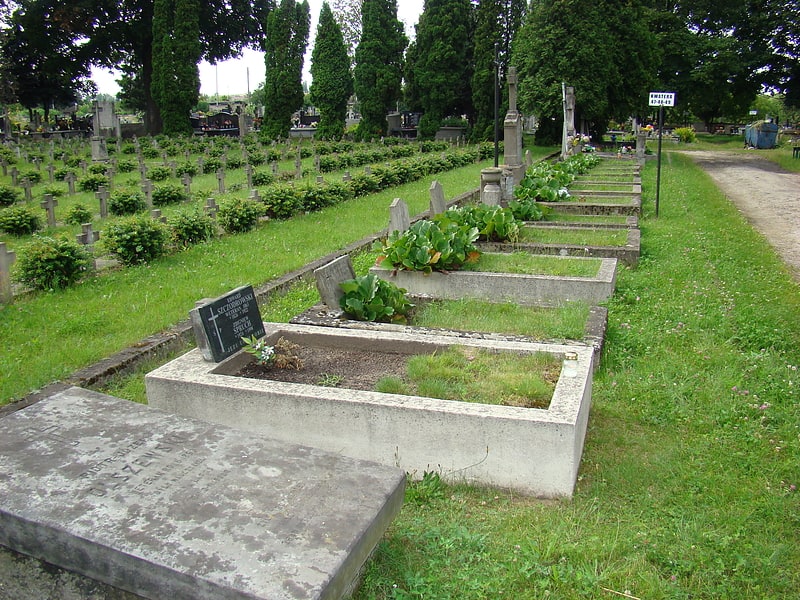
Kule Cemetery in Częstochowa is a necropolis located on a small hill north of Częstochowa's city center. Situated near Kule, a suburb, in 1882, after the cemetery was moved from the area of Fabryczna and Ogrodowa Streets. The first burials took place two years later.
Approximately one thousand pre-1939 tombstones have survived to this day, including one hundred from the late 19th century. Among them are two family burial chapels: Among them there are two family burial chapels: Kuczyński, Szaniawski and Nowiński, as well as several dozen antique graves, e.g. of Władysław Biegański.
In the central part of the cemetery there is located the neo-gothic Emmaus Resurrection Church, erected as a cemetery chapel in 1898. In the 60's it was rebuilt.
In the southeastern part of the cemetery there is an Orthodox section, where the tsarist officials and military men are buried. In the interwar period the graves from the liquidated Orthodox cemeteries on St. Roch St. and the cemetery by the church of Saints Cyril and Methodius were transferred here. There is also a war plot of Red Army soldiers and their monument.
Effective July 1, 2019, the management of Kule Cemetery, after years of care by St. Sigismund's Parish in Częstochowa, was directly assumed by the Curia of the Archdiocese of Częstochowa.
Staszic Park
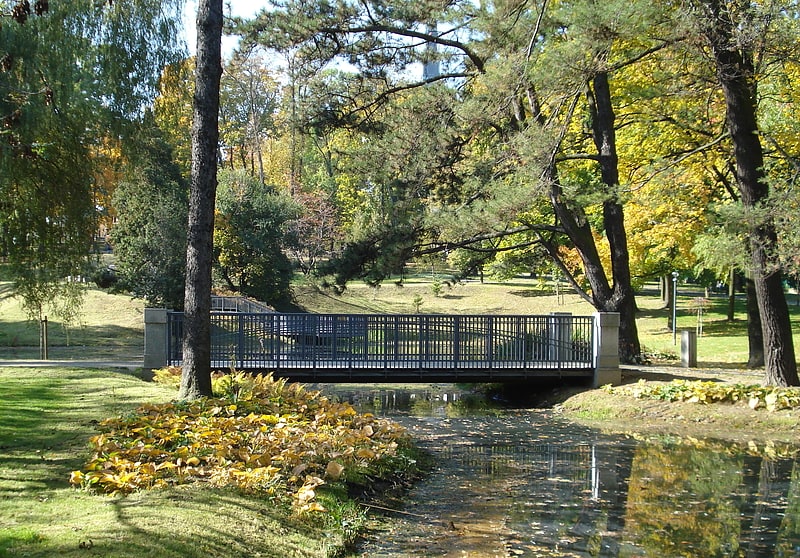
Podjasnogórskie Parks, sometimes called Jasna Góra Parks - two city parks in Częstochowa, in the Podjasnogórska district - Stanisław Staszic Park and 3 Maja Park. They are located between Srodmiescie district and Jasna Góra monastery, which they surround from the east.
The park boundaries were set in the years 1819-1826 while delineating the Najświętszej Maryi Panny Avenue, and land development began in 1843. Together with Henryk Sienkiewicz Avenue they cover an area of 11.8 ha. The rich and historically valuable furnishings and structures of the parks have led to their recognition as a monument of Polish history.
There are exhibition pavilions in the parks, managed by the Częstochowa Museum.
Cmentarz Świętego Rocha
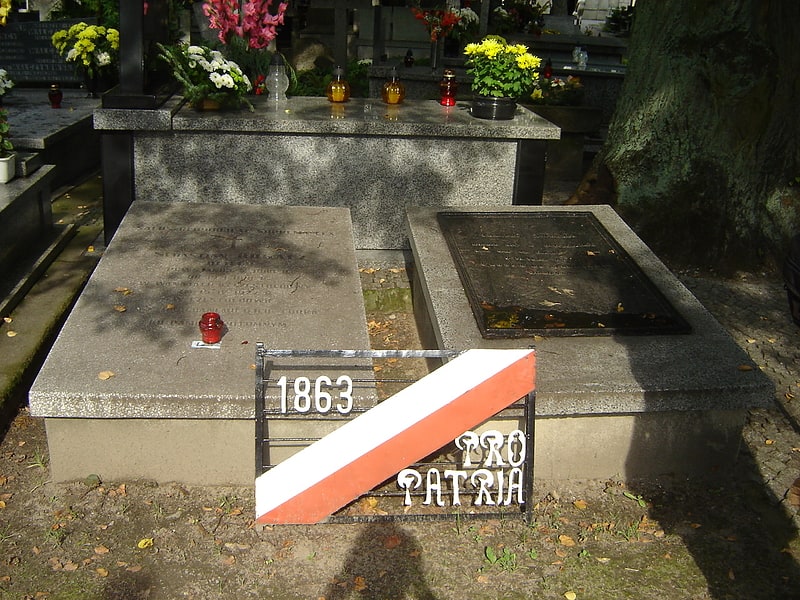
St. Roch Cemetery in Częstochowa - necropolis located on the eastern border of the Lisiniec district. It is the oldest active cemetery in Poland.
There are several theories about the origin of the cemetery: the cemetery of pilgrims who died on their way to Jasna Gora, an infectious cemetery intended for the dead during epidemics; this theory may be supported by the fact that St. Roch was supposed to protect against infectious diseases
The first burials took place in 1641. The cemetery was enlarged in 1737 and two years later the first brick tombs appeared. In 1767 it was first surrounded by a wall, later ruined and rebuilt. The cemetery contains historic tombstones from 1849-1906.
In 1898 an Orthodox cemetery was separated from its territory, but after independence the area was returned to Catholics.
The first chapel in the cemetery was built in the years 1641-1642. Destroyed during the Swedish Deluge, it was replaced by the current church of St. Roch and St. Sebastian (consecrated in 1680), built in its place. In 1739 it was renovated, and in 1771, during the Bar Confederates' fights, it was plundered. Rebuilt in the years 1783-1785, when the highest part of the tower was dismantled, two towers were added on the sides and a sacristy was erected. Until 1880 it was served by Pauline monks. It has features of a baroque building. It has one nave.
In the cemetery chapel there is a plaque commemorating Marshal Jozef Pilsudski. Next to the chapel there is a symbolic grave-monument with an open book with the names of people connected with the conspiracy and killed during the occupation or in the period of the Polish People's Republic. On the cemetery there are also noteworthy a war grave (17 individual graves) of Silesian insurgents killed in 1921, graves of insurgents from 1863, a mass war grave of 13 victims of Nazi terror, including 10 hostages shot in the Wieluñski Market Square on November 1, 1943, a war grave of German soldiers, war grave of German, Austrian and Russian soldiers killed between 1915-1918, a mass grave of soldiers of the resistance movement killed in 1944 and victims of the Nazi terror killed in 1939, a symbolic grave of the brothers Jerzy, Rajmund and Wlodzimierz Sosnowski killed during World War II
There is also a separate part of the cemetery complex forming a separate Evangelical-Augsburg cemetery with a section of German soldiers killed during World War I.
Address: 79 Świętego Rocha, Częstochowa